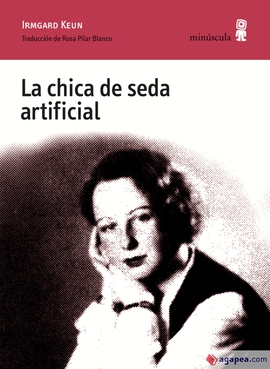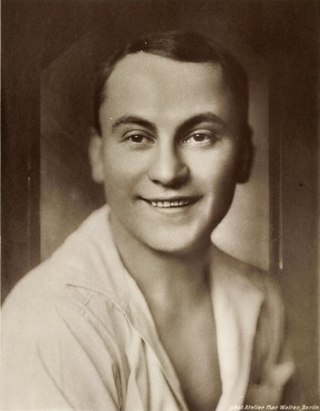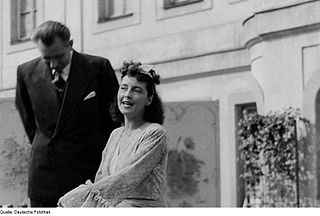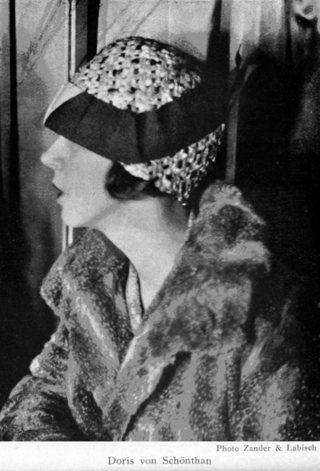
Irmgard Keun was a German novelist. Noted for her portrayals of the life of women, she is described as "often reduced to the bold sexuality of her writing, [yet] a significant author of the late Weimar period and die Neue Sachlichkeit." She was born into an affluent family and was given the autonomy to explore her passions. After her attempts at acting ended at the age of 16, Keun began working as a writer after years of working in Hamburg and Greifswald. Her books were banned by Nazi authorities but gained recognition during the final years of her life.

Christa Winsloe, formerly Baroness Christa von Hatvany-Deutsch, was a German-Hungarian novelist, playwright and sculptor, best known for her play Gestern und heute, filmed in 1931 as Mädchen in Uniform and the 1958 remake. Winsloe was the first to write a play on female homosexuality in the Weimar Republic, yet without a "radical critique of the social discrimination of lesbian women."
Marieluise Fleißer was a German writer and playwright, most commonly associated with the aesthetic movement and style of Neue Sachlichkeit, or New Objectivity.

Ricarda Huch was a pioneering German intellectual. Trained as a historian, and the author of many works of European history, she also wrote novels, poems, and a play. Asteroid 879 Ricarda is named in her honour.

Charlotte Ander was a German actress.

The High Life is a 1960 French, West German and Italian film directed by Julien Duvivier, based on the novel Das kunstseidene Mädchen by Irmgard Keun.

Kurt Vespermann was a German stage and film actor.

Valeska Gert was a German dancer, pantomime, cabaret artist, actress and pioneering performance artist.

Dorothea Wieck, born Dora Bertha Olavia Wieck, was a German theatre and film actress.

Gabriele Reuter was a German writer.
Das häßliche Mädchen is a German comedy film made in early 1933, during the transition from the Weimar Republic to Nazi Germany, and premièred in September that year. It was the first or second film directed by Hermann Kosterlitz, who left Germany before the film was completed and later worked in the United States under the name Henry Koster, and the last German film in which Dolly Haas appeared; she also later emigrated to the US. A Nazi-led riot broke out at the première to protest the male lead, Max Hansen, who was supposedly "too Jewish." The film's representation of the "ugly girl" as an outsider has been described as a metaphorical way to explore the outsider existence of Jews.

Elizabeth Shaw was an Irish artist, illustrator and children's book author, active in Germany.

Alice Rühle-Gerstel was a German-Jewish writer, feminist, and psychologist.
Minna Stern, known professionally as Hermine Sterler, was a German-American actress whose career spanned both the silent and the talkie film eras on two continents.

Lien Deyers was a Dutch actress based in Germany.

Maria Matray was a German screenwriter and film actress. Matray became a star of late Weimar cinema.

Volker Weidermann is a German writer and literary critic. He currently works for Frankfurter Allgemeine Zeitung as the literary director and editor of the newspaper's Sunday edition. In 2015, he changed to Der Spiegel.

Elke Erb was a German author-poet based in Berlin. She also worked as a literary editor and translator.

Doris von Schönthan (1905–1961), born Maria-Dorothea Ehemann, called 'Dorinde', was a German model, a copywriter, journalist and photographer. She is characterised as a dazzling figure of the Weimar Republic or bohemian of the Roaring Twenties.

Lili Grün was an Austrian writer and actress. Her debut novel Herz über Bord (1933) was enthusiastically received by critics. In it, she processes her experiences in the Berlin cabaret Die Brücke. Grün wrote two other novels, which are also contemporary novels of the New Objectivity. She also published poems and short stories in newspapers and magazines. Her autobiographically influenced texts deal with the loneliness of the female main characters, love and the tense relationship between the sexes, and the difficulties that young emancipated women have in finding a place in society. Grün's literary work came to an abrupt end as a result of the disenfranchisement and persecution of Jews during the Nazi Germany. In 2007, German studies scholar Anke Heimberg came across the novel Herz über Bord and began researching the writer's life and work, whose texts she published in the following years by AvivA Verlag in Berlin.

















